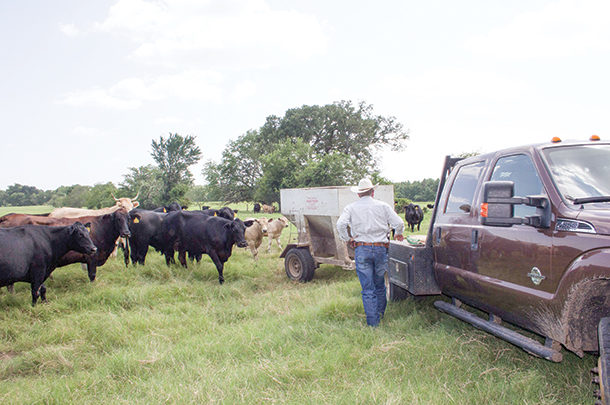Make sure you get more than you spend. This seems like an incredibly basic principle – and, in fact, it is. Stated in a different way, it is also one of the foundational principles of profit maximization in economic theory. Economists usually discuss the idea while using the terms “marginal revenue” and “marginal cost.”
In the most basic sense, marginal revenue is the additional revenue generated by producing an additional unit of something. Marginal cost, then, is the additional cost generated by producing an additional unit of something. A market is in equilibrium when the marginal cost of producing an additional unit is equal to the marginal revenue of producing that additional unit. As long as the marginal revenue from some decision exceeds the marginal cost from that decision, we can say that action is a profitable step to take.
Why am I reintroducing economic terms into a quick essay on supplementation and feeding? It is because this simple principle is often forgotten, or worse, remembered and disregarded to the detriment of the cattleman’s bottom line. Feed is the number one variable cost when raising calves – and while profit-maximizing decisions seem like a no-brainer, the practice of evaluating feeding choices takes, well, practice. Balancing the marginal revenue of a supplementation or substitutive feed with its marginal cost takes time and requires knowledge of the nutritive content of each feed option, including the nutritive content of standing forage alternatives.
Let’s look at a quick example of how to evaluate the marginal revenue and marginal cost of some supplemental feeding decisions (Table 1).

We’ll focus on a theoretical supplementation decision on a 500-pound winter wheat stocker calf for mathematical ease. We’ll assume the calf has 90 days remaining on pasture. His base gain on winter wheat is about 1.5 pounds per day.
- Strategy 1: No supplementation. Under this strategy, the steer calf will gain 135 pounds over 90 days. His final weight when we take him off pasture will be 635 pounds. We’ll estimate a gross weight-based price for this calf at approximately $1.35 per pound. The marginal cost and marginal revenue of supplementation under this strategy are both zero per pound, as no supplemental feed was provided.
- Strategy 2: Supplementation with feed. Under this strategy, we’ll feed a supplemental grain ration at a rate of 1% of bodyweight per day, which amounts to 4.5 pounds of supplemental feed grain per day. On a rough scale, we’ll assume the additional weight gained from supplementation is an additional 0.1 pound for every 4.5 pounds of supplemental grain fed. That means that over the 90-day period, our calf will gain an additional 9 pounds, on 405 pounds of supplemental feed, for a total final weight of 644 pounds. If we assume a feed cost of roughly $5.50 per bushel of supplemental grain feed, we have a marginal cost of 10 cents per pound and a total cost of additional gain of $40.50 per head. We’ll estimate a gross weight-based price for this calf at approximately $1.34 per pound. The total additional revenue from supplementation, then, equals $11.7 per head.
Now, you may look at this and wonder: How did we see a loss from supplementation when our total per head from supplementing was higher? We go back to those principles of marginal revenue and marginal cost. The marginal revenue from supplementation is calculated (see Equation 1). The marginal cost is calculated (see Equation 2).

What does this all boil down to? Let’s return to the simple idea we began with. Using this supplemental feed, it cost us $4.50 to gain a single pound, while the revenue gained from that choice was only 63 cents per pound. Therefore, the marginal cost ($4.50 per pound) exceeds the marginal revenue (63 cents per pound) of supplementation. There is an implied profit column at the end of the table that assumes, in this enterprise analysis setting, our only evaluated cost is supplementation. You can see that, though our revenue per head is higher with supplementation, when we factor in the cost of supplementation, profitability actually goes down. The lighter calf yields an enterprise profit of $857.25 while the heavier calf yields an enterprise profit of $834.16.
There are certainly limitations to this concept. The health and well-being of your livestock is the paramount concern. If the pasture is bare and a (high-cost) quality hay is the only alternative available to you, their base nutrient requirements have to be met regardless of the cost. There are also different objectives and considerations for open, pregnant and lactating cows, and those concerns should be factored into this enterprise analysis. This idea is also much easier to evaluate in hindsight and works best for those who have knowledge of their system’s typical gain returns to different feed types. (This is where keeping up with your own data is critical.)
There are also extensions on this idea. There are implicit costs to supplemental feed that should be considered. There are different delivery costs and the cost of time to refill and replace supplemental feed. With many feeds, particularly hay, waste is a very real concern. The marginal cost of supplementation skyrockets if you lose a third of your feed, which is a very real outcome in poor hay-feeding settings.
You can also make this decision more complex by considering the nutrient balance of different feeds. There are certain implicit gains from supplementation to be considered too. Does supplementing make your calves easier to handle, and what is that worth? Are you really supplementing or substituting? Are there complementary impacts to gain from forage based on the supplements you choose?
This is an incredibly simplified evaluation tool for what can be a complex decision. We obviously cannot factor in all of the tiny gains and losses from a single decision, but we can return to basic principles for some easy dollars-and-cents outcomes.
For the factors that complicate the choice of supplementation,Texas A&M AgriLife Extension faculty recently published the Supplemental Feedstuff Cost and Value Calculator. This spreadsheet tool factors in nutrient composition and feedstuff cost to help producers evaluate their more complex supplementation decisions.












